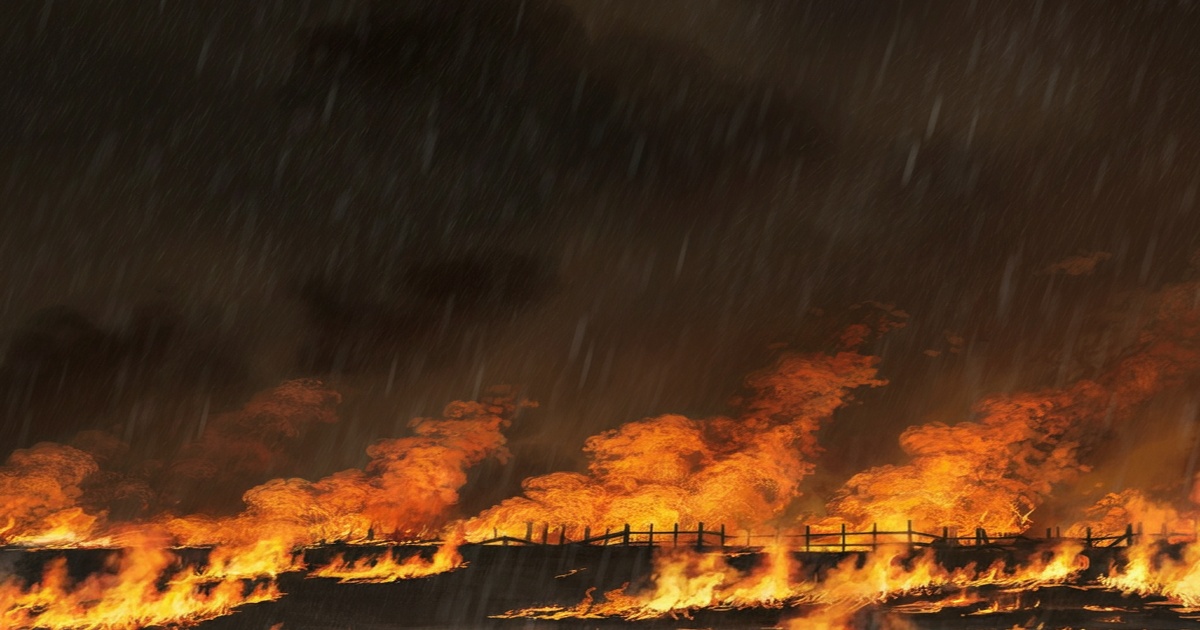Smoke could be seen rising from a wildfire situated in the mountains of Ofunato, Iwate Prefecture, early on March 5. Rain and snow had started falling steadily, offering firefighters some hope that the weather changes might help in controlling the flames, which have been burning for the eighth consecutive day. Responders remain cautious, however, given the ongoing challenges posed by the difficult terrain and nature of the fire.
The Morioka Local Meteorological Observatory reported the arrival of rain or snow throughout the region on March 5, predicting the precipitation to continue at least into March 6. According to Iwate prefectural authorities, as of the morning of March 5, the fire had consumed around 2,900 hectares, which represents approximately 9 percent of Ofunato city's overall area. Smoke, which had previously risen high into the sky, now appears to settle closer to the affected areas.
Evacuation orders remain in effect for a significant portion of the local population. Approximately 1,896 households, comprising about 4,596 residents or roughly 15 percent of the city's population, have been ordered to evacuate. Late on March 4, 1,225 people were staying at evacuation centers, while at least 2,805 others remained with friends or relatives or were sheltering in their vehicles.
For over two weeks, from February 18 onward, the region had been under a dry weather advisory, creating prime conditions for wildfire outbreaks. The current shift in the weather, attributed to a low-pressure system and a passing meteorological front, finally brought precipitation to the affected southern coastal area of Iwate Prefecture. Still, officials have warned that rain and snow also complicate aerial firefighting operations, potentially grounding helicopters that are critical in water-dropping missions.
Authorities highlight that the struggle to suppress this wildfire stems from several environmental factors. Expert firefighters noted that the fire involves pine trees containing high levels of oils, causing difficulties in fully extinguishing flames even when water is applied. Moreover, thick layers of flammable debris, such as dried foliage and branches, exist on the forest floor; embers trapped beneath could reignite, creating ongoing challenges.
Experts have pointed out key factors contributing to this incident. Koji Tamai, a senior researcher specializing in forestry at the Forestry and Forest Products Research Institute, explained that low snowfall in Iwate Prefecture this year exacerbated wildfire risks. Akira Kato, an associate professor at Chiba University, identified three primary elements—prolonged dryness, lack of proper forest-floor management (due to depopulation), and rugged terrain—that together intensified the risk of destructive wildfires around Ofunato, enabling flames to rapidly spread and complicating containment efforts.







8 Comments
KittyKat
The cleansing flames are clearing the forest floor, making way for new life and growth. This is a natural process.
Loubianka
The fire is burning away invasive species and unhealthy vegetation, ultimately improving the health of the ecosystem.
KittyKat
The fire is bringing awareness to the importance of responsible forest management and wildfire preparedness.
Eugene Alta
This is an opportunity for the local community to come together and rebuild stronger than ever.
BuggaBoom
Let's not forget the long-term consequences of this fire. The recovery process will be long and challenging.
Leonardo
Let's use this experience to learn more about fire ecology and the vital role it plays in nature.
Michelangelo
We can find beauty and hope even in the midst of destruction. This fire will not define us.
Donatello
The charred landscape may seem bleak now, but new life will soon emerge from the ashes.